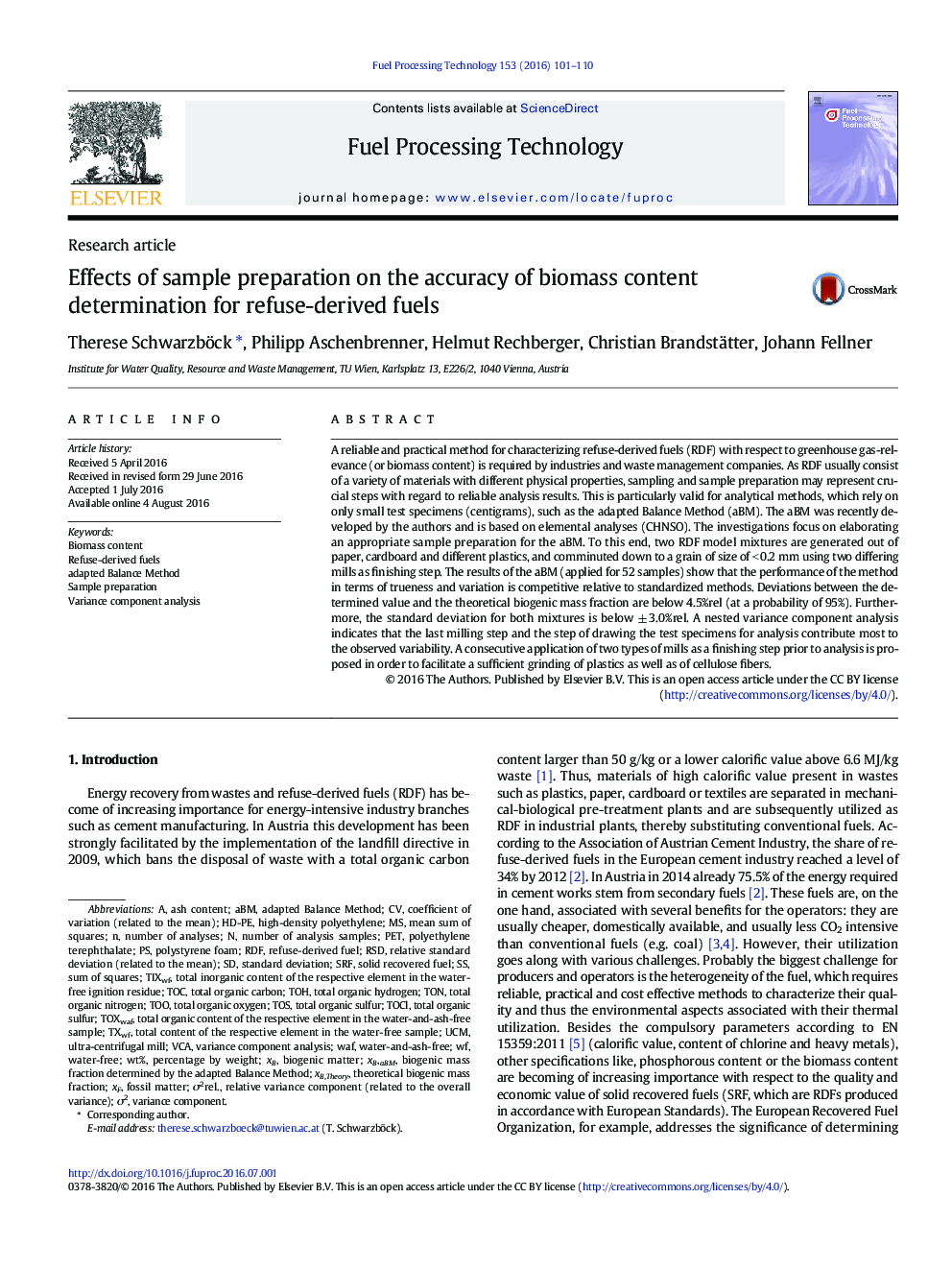| Article ID | Journal | Published Year | Pages | File Type |
|---|---|---|---|---|
| 6656572 | Fuel Processing Technology | 2016 | 10 Pages |
Abstract
A reliable and practical method for characterizing refuse-derived fuels (RDF) with respect to greenhouse gas-relevance (or biomass content) is required by industries and waste management companies. As RDF usually consist of a variety of materials with different physical properties, sampling and sample preparation may represent crucial steps with regard to reliable analysis results. This is particularly valid for analytical methods, which rely on only small test specimens (centigrams), such as the adapted Balance Method (aBM). The aBM was recently developed by the authors and is based on elemental analyses (CHNSO). The investigations focus on elaborating an appropriate sample preparation for the aBM. To this end, two RDF model mixtures are generated out of paper, cardboard and different plastics, and comminuted down to a grain of size of < 0.2 mm using two differing mills as finishing step. The results of the aBM (applied for 52 samples) show that the performance of the method in terms of trueness and variation is competitive relative to standardized methods. Deviations between the determined value and the theoretical biogenic mass fraction are below 4.5%rel (at a probability of 95%). Furthermore, the standard deviation for both mixtures is below ± 3.0%rel. A nested variance component analysis indicates that the last milling step and the step of drawing the test specimens for analysis contribute most to the observed variability. A consecutive application of two types of mills as a finishing step prior to analysis is proposed in order to facilitate a sufficient grinding of plastics as well as of cellulose fibers.
Keywords
Related Topics
Physical Sciences and Engineering
Chemical Engineering
Chemical Engineering (General)
Authors
Therese Schwarzböck, Philipp Aschenbrenner, Helmut Rechberger, Christian Brandstätter, Johann Fellner,
